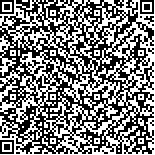郝佳丽,李雯燕,武俊英.基于神经营养因子探讨经颅直流电刺激对缺血性脑卒中患者的影响[J].中华物理医学与康复杂志,2024,46(3):237-241
扫码阅读全文

|
| 基于神经营养因子探讨经颅直流电刺激对缺血性脑卒中患者的影响 |
|
| |
| DOI:10.3760/cma.j.issn.0254-1424.2024.03.009 |
| 中文关键词: 经颅直流电刺激 脑卒中 脑源性神经营养因子 神经生长因子 抑郁 认知障碍 |
| 英文关键词: Transcranial direct current stimulation Stroke Brain-derived neurotrophic factors Nerve growth factors Depression Cognitive impairment |
| 基金项目:中央引导地方科技发展基金(No2020Z135050009017) |
|
| 摘要点击次数: 3153 |
| 全文下载次数: 3373 |
| 中文摘要: |
| 目的 探讨经颅直流电刺激(tDCS)对缺血性脑卒中患者的影响,以及与外周血神经营养因子的相关性。 方法 将40例缺血性脑卒中患者按随机数字表法分为对照组与治疗组,每组20例。2组患者均给予常规药物治疗及康复训练,治疗组在此基础上增加tDCS,强度2.0 mA,每次20 min,每日1次,共14次,对照组给予伪刺激。治疗前及治疗2周后(治疗后),采用改良Barthel指数(MBI)、简易精神状态量表(MMSE) 、汉密尔顿抑郁量表(HAMD)、抑郁自评量表(SDS)对2组患者进行评估,用ELISA法测定外周血脑源性神经营养因子(BDNF)、神经生长因子(NGF)水平。 结果 治疗前,2组患者MBI、MMSE、HAMD、SDS评分及外周血BDNF、NGF水平比较,差异均无统计学意义(P>0.05)。与组内治疗前比较,2组患者治疗后上述指标均改善(P<0.05)。与对照组比较,治疗组治疗后MBI评分[(68.00±14.81)分]、MMSE评分[(24.85±3.12)分]较高(P<0.05),HAMD评分[(19.70±2.11)分]较低(P<0.05),外周血BDNF水平[(108.20±36.96)pg/ml]、NGF水平[(2.90±1.03)pg/ml]较高(P<0.05)。 结论 tDCS可以有效改善缺血性脑卒中患者的认知功能,减轻抑郁症状,提高生活自理能力,其作用机制可能与神经营养因子水平升高有关。 |
| 英文摘要: |
| Objective To explore the impact of transcranial direct current stimulation (tDCS) on ischemic stroke survivors in terms of its association with neurotrophic factors in a person′s peripheral blood. Methods Forty ischemic stroke survivors were randomly allocated into a control group and a treatment group, each of 20. Both groups were given routine medication and rehabilitation, while the treatment group was additionally provided with 20 minutes of tDCS daily at an intensity of 2.0mA. There were 14 sessions over two weeks. The control group received sham stimulation. Before and after the experiment, both groups were assessed using the Modified Barthel Index (MBI), the Mini-mental State Examination (MMSE), the Hamilton Depression Scale (HAMD), and the Self-rated Depression Scale (SDS). The concentrations of brain-derived neurotrophic factor (BDNF) and nerve growth factor (NGF) in the subjects′ peripheral blood were quantified using enzyme-linked immunosorbent assays (ELISAs). Results Baseline comparisons revealed no significant disparities between the two groups in their average MBI, MMSE, HAMD, or SDS results, nor in their average BDNF or NGF levels. Post-treatment assessments indicated significant enhancements across these metrics within both groups. Notably, the treatment group then exhibited average MBI and MMSE scores superior to those of the control group, alongside a lower average HAMD score. Furthermore, elevated levels of BDNF [(108.20±36.96)pg/ml] and NGF [(2.90±1.03)pg/ml] were observed in the treatment group. Conclusion tDCS appears to significantly enhance cognition, minimize symptoms of depression, and augment self-care ability after an ischemic stroke. These benefits are possibly mediated through the increase of neurotrophic factor levels. |
|
查看全文
查看/发表评论 下载PDF阅读器 |
| 关闭 |
|
|
|